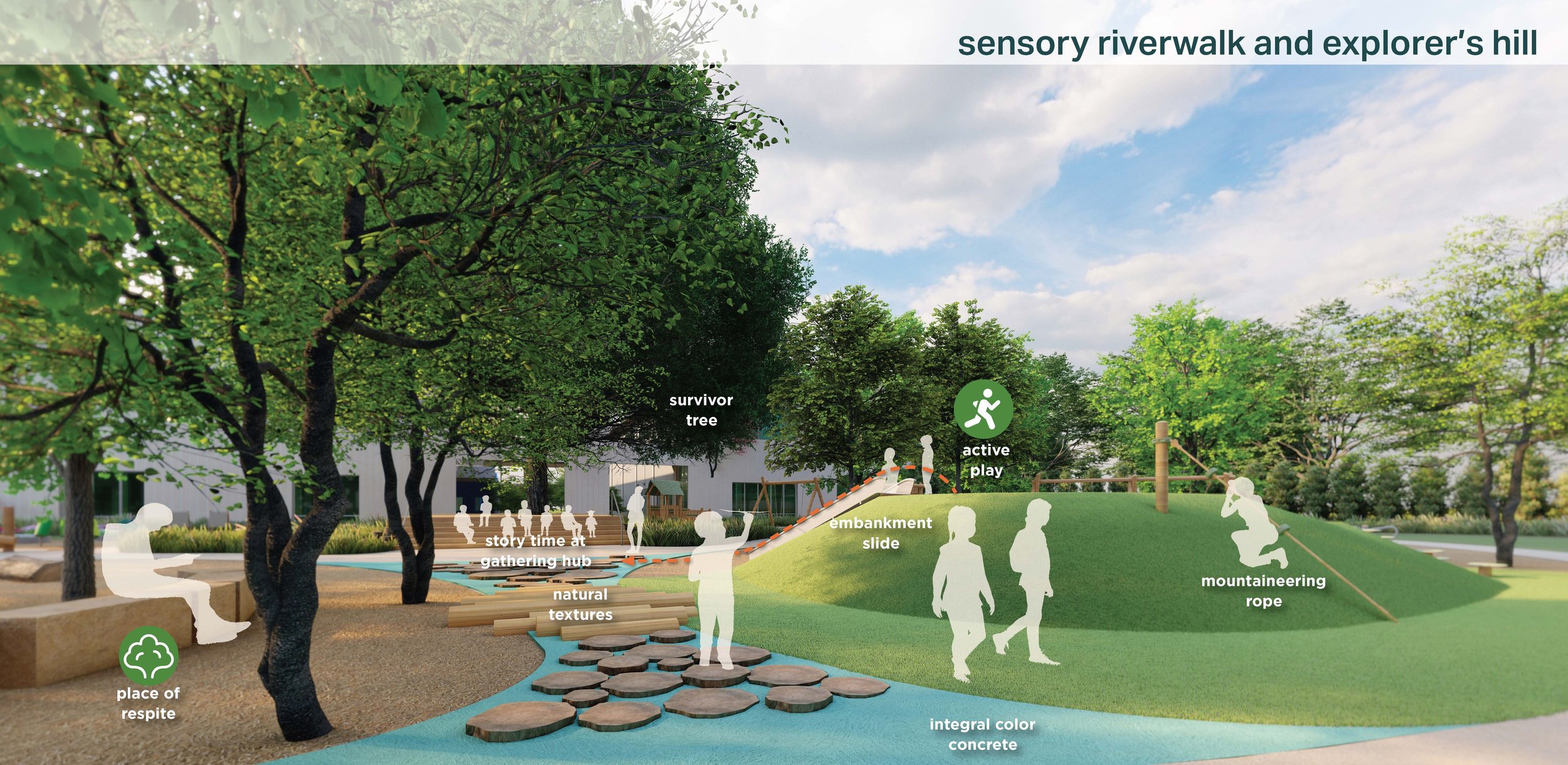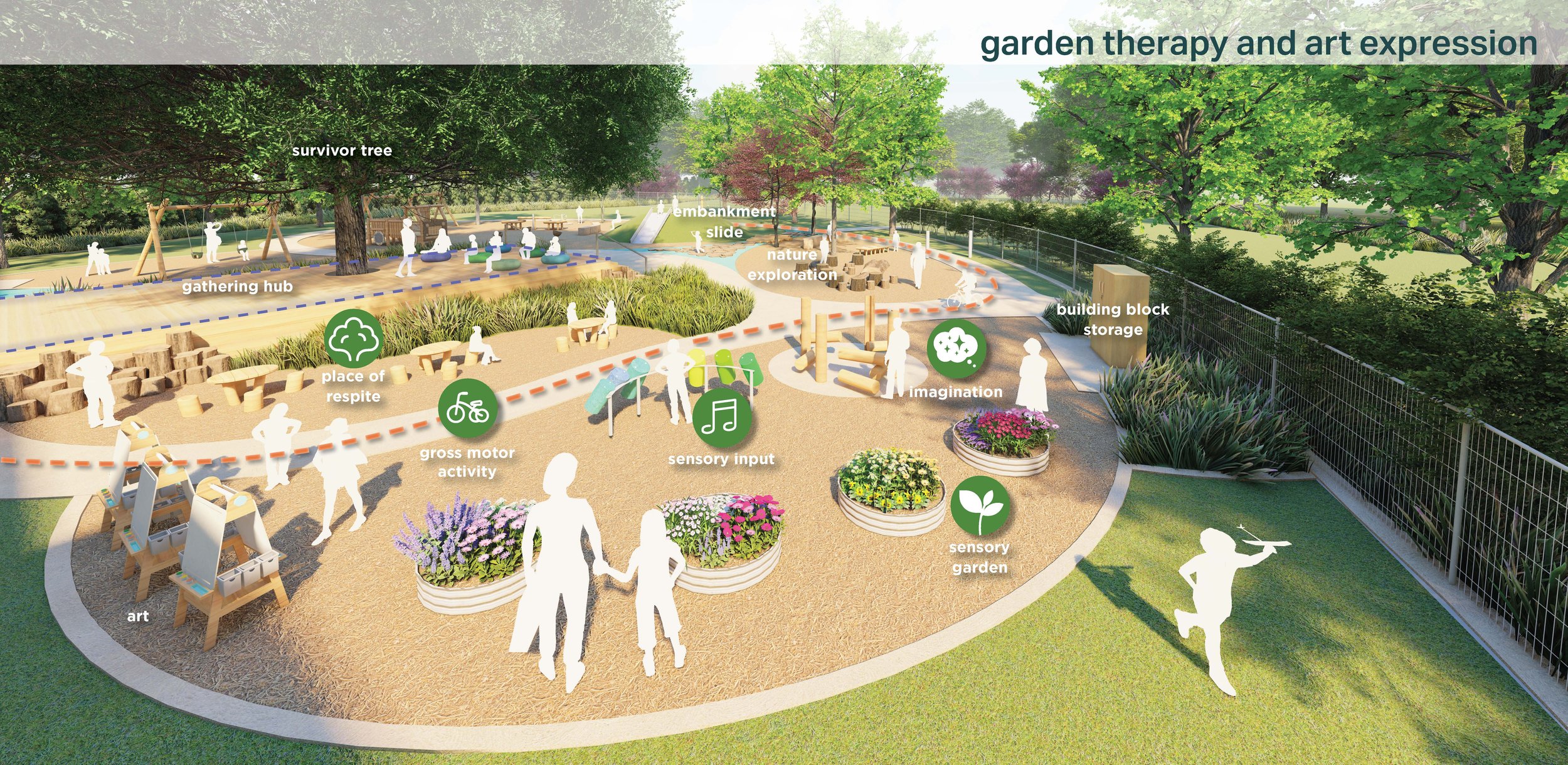This essay is a collaboration between Lauren Wardwell and Tary Arterburn, FASLA.
_____
A Brief history
While identification of the first botanic garden is largely contested and likely limited by a Eurocentric record of cultural influence, the botanic gardens of the past were created for many of the same reasons that we value them today: scientific research, education, aesthetics, and recreation.
Past gardens that most resemble the ones we have today were generally called psychic gardens, with medicinal plants used for research and medical training. One such garden is the Orto Botanico di Padova in Padua, Italy. It was founded in 1545, representing the documented birth of botanical science as it relates to understanding relationships between nature and culture. Today, UNESCO recognizes it as a World Heritage Site.
In 1590, the Hortus Botanicus of Leiden was established in the Netherlands, marking a significant shift in the evolution of botanic gardens. This garden, which housed exotic plants gathered from various colonial expeditions, popularized the concept of 'collecting' plants from around the globe. Its influence inspired the establishment of many botanic gardens that still exist today, such as the Kew Gardens in London and Real Jardín Botánico in Spain.
The gardens of the 19th and 20th centuries began to respond to the concept of "pleasure grounds" or spaces existing for beauty rather than scientific pursuits as part of a larger construct with the idea of romanticism and an increased emphasis on individualism and health. These gardens focused on the visitor experience, emphasizing aesthetics, education, and interpretation. As governments reduced funding for gardens in the latter half of the 20th century, the need to be self-supporting led to an increased focus on revenue and, thus, the need for events and programming.
Within this context, the botanic garden of the 21st century is at a pivotal point, with various new and old influences shaping its future. Studio Outside has worked alongside many leaders at different institutions over the past several decades in crafting a curated approach to frame gardens for lasting success. Tary Arterburn, a founding partner of Studio Outside, leads the design efforts in our office around these uniquely positioned landscapes.
Today, gardens serve as public institutions where people go for various reasons: to spend time with family, learn about plants, find moments of respite, and generally engage with nature. Serving as the background and sometimes as the focus of these experiences is a highly cultivated form of nature that, whether naturalized or formal, brings people in direct connection with a beautiful and vast array of botanical forms that they would not likely find in their daily lives.
As the purpose and motivations behind visiting botanic gardens have evolved, so too have the missions of these gardens. In the last ten years, many gardens have shifted away from plant collections and towards regional authenticity. While every historic garden might have a rose garden, regardless of where it is, today, these botanical spaces are increasingly becoming hubs for ecological understanding, environmental stewardship, and education. The '19th-century' idea of collecting specimens from around the world has been replaced by more relevant and pressing topics, such as our relationship with nature and beauty.
the importance of design
Concerning botanic garden design, a site's ecological and social parameters become the primary consideration.
Red Butte Garden at the University of Utah, for example, was initially created to conduct plant research, focusing mainly on the native Utah scrub oak. As the collection grew, the site was formally established as the State Arboretum and later expanded to adopt 100 acres of land along Red Butte Canyon. At this point, the garden mission grew beyond horticulture, incorporating conservation and environmental education into its programming. Today, the garden's mission is "to connect people with plants and the beauty of living landscapes." These values are evident in the Water Conservation Garden and the 2024 Master Plan, emphasizing responsible land stewardship while highlighting the regional ecology of the Wasatch foothills throughout the designs.


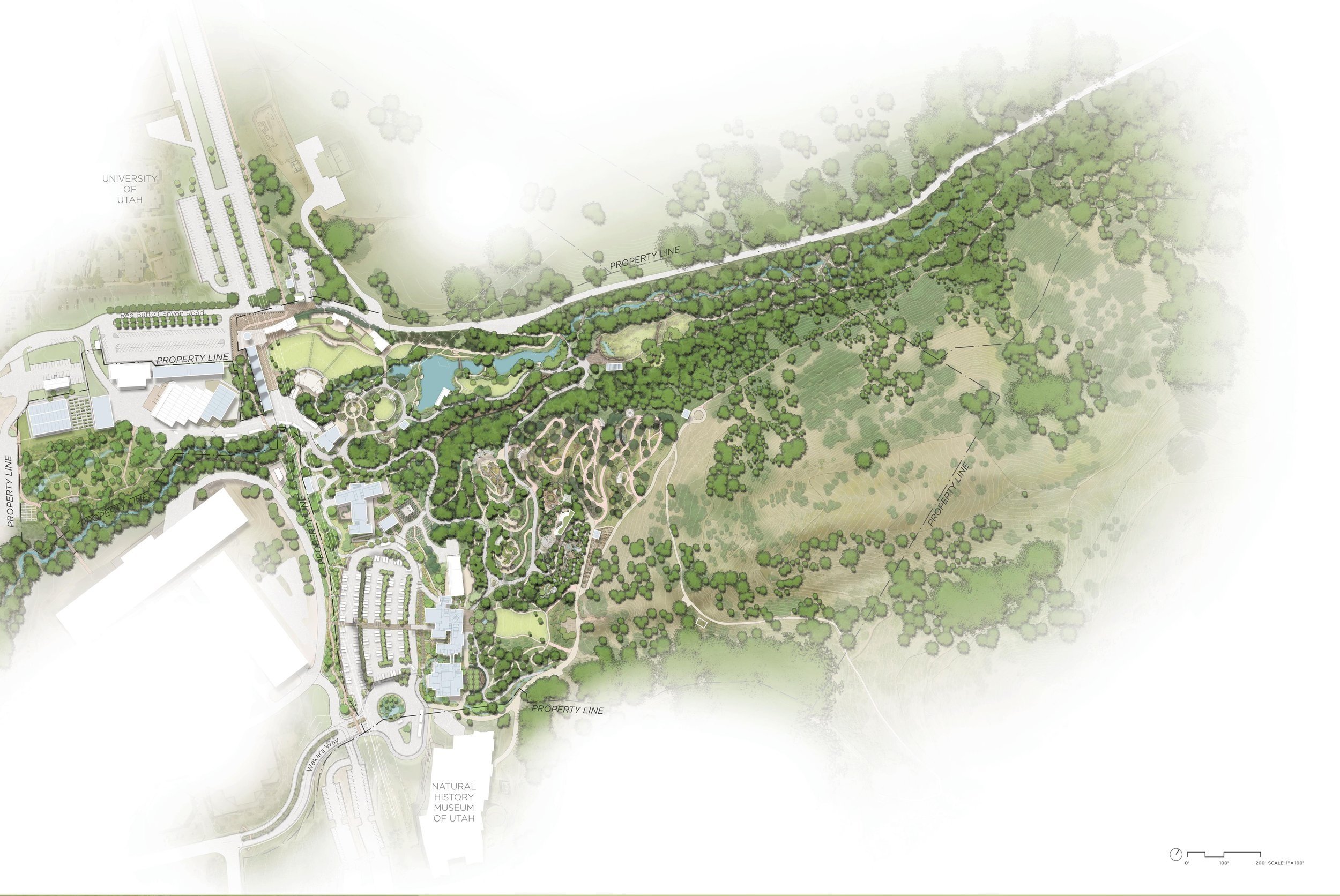


In East Texas, the Shangri La Botanical Gardens and Nature Center Master Plan began in 2001 as a restoration project to revive a garden from the 1950s. While the legacy garden served as an “oasis” in Orange, Texas, with azalea and camellia gardens, this new master planning process aimed to establish a model for environmental responsibility in Texas. Existing phenomena on the site, such as a bird sanctuary within a cypress grove and an undeveloped 200-acre cypress and tupelo wetland, informed the design. With a desired program focused on environmental education, the site has transformed into a Nature Center where visitors immerse themselves in wetland ecosystems and reflect on the relationships between nature and art.






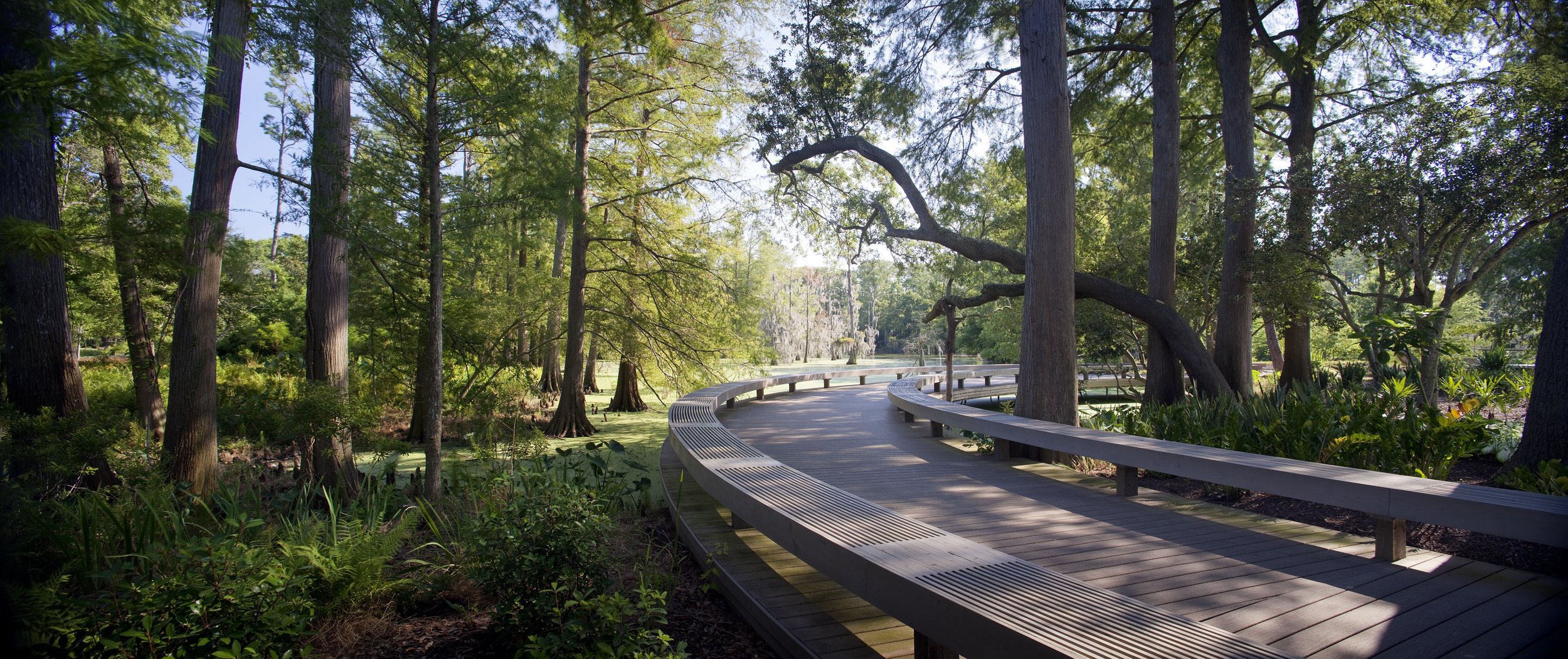


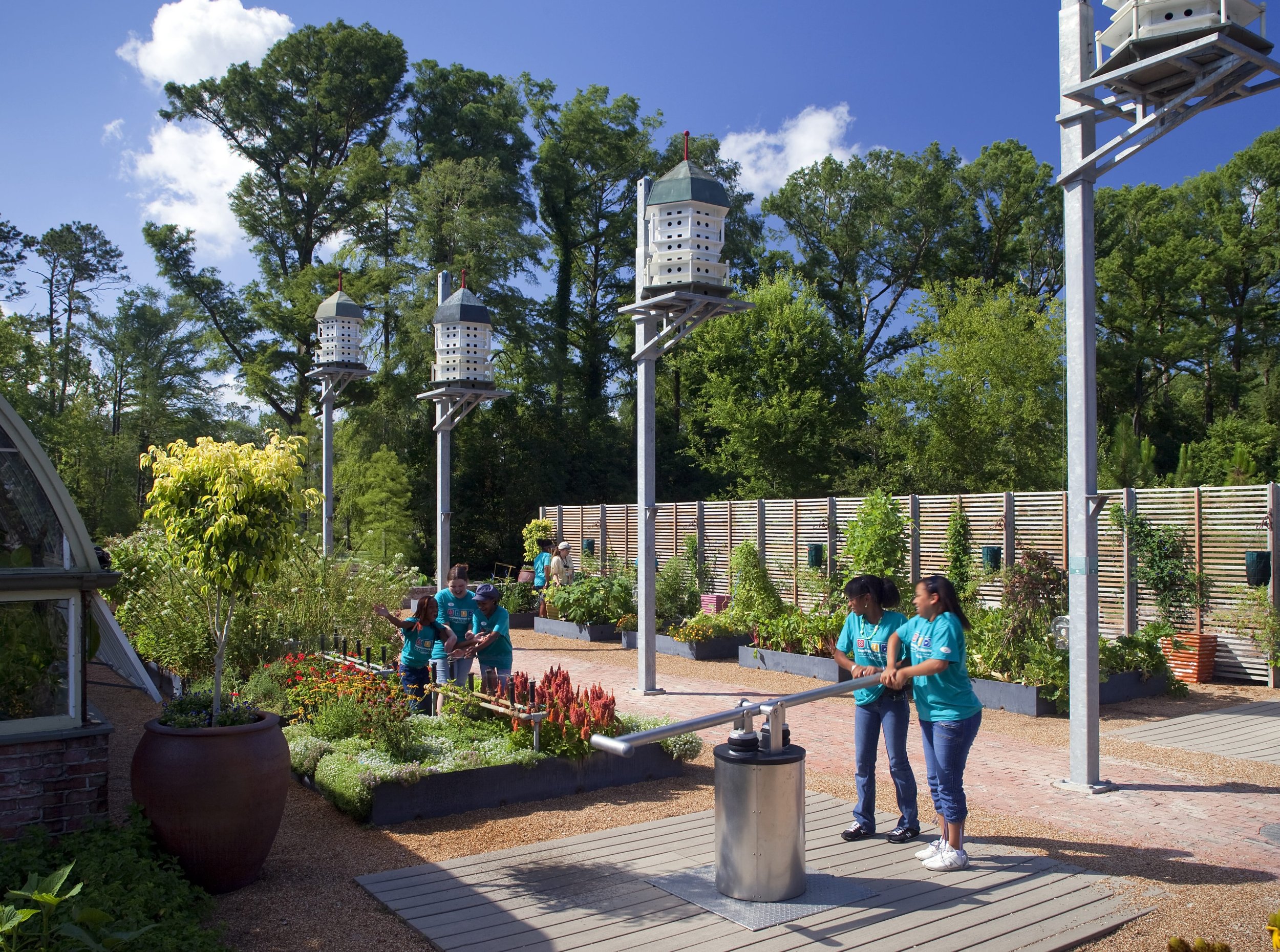
Gardens today need to preserve and celebrate a local ecology and directly engage a community so that relationships form between an environment and the people living in it. When the design team has a lot of interactive experiences with staff and visitors, the design follows the intuition of the stakeholders, who have the local expertise and a deeply rooted connection to the land. Thus, the plan becomes a product of the community.
Through discovery workshops and community engagements, the Fort Worth Botanic Garden Master Plan harnessed intense levels of programming discussion and review of various scenarios with the stakeholder team and staff, ultimately helping Studio Outside to draw the plan. Through this iterative process of designing WITH the community, unexpected designs take shape that are thoughtful, realistic, and successful in the long term.


Simultaneously, a place of quiet refuge and dramatic experiences, often balancing intense cultivation with respectful conservation, holding space for education and beauty –botanic gardens play an exclusive role in today’s cultural landscape that must be preserved and celebrated.








